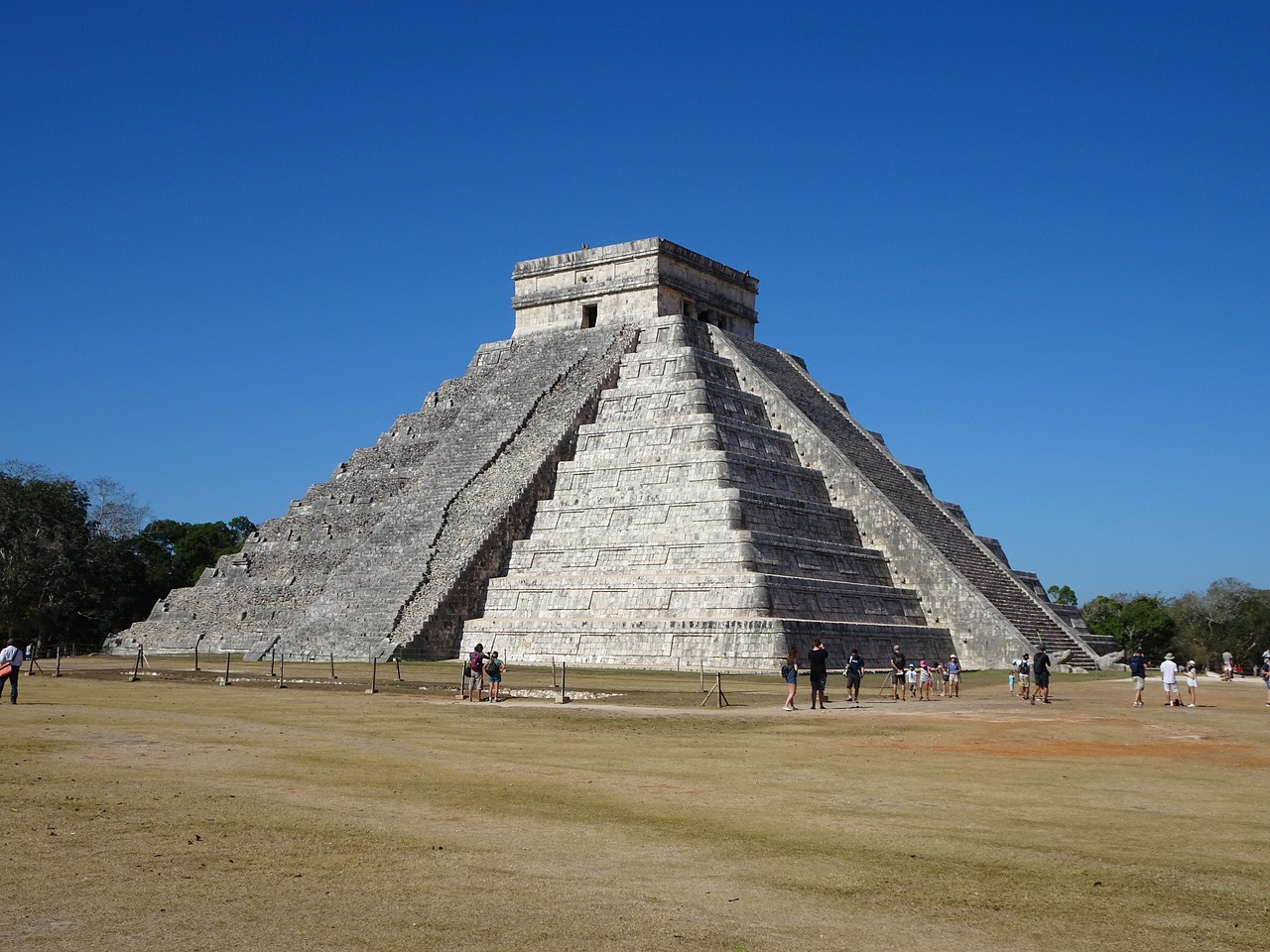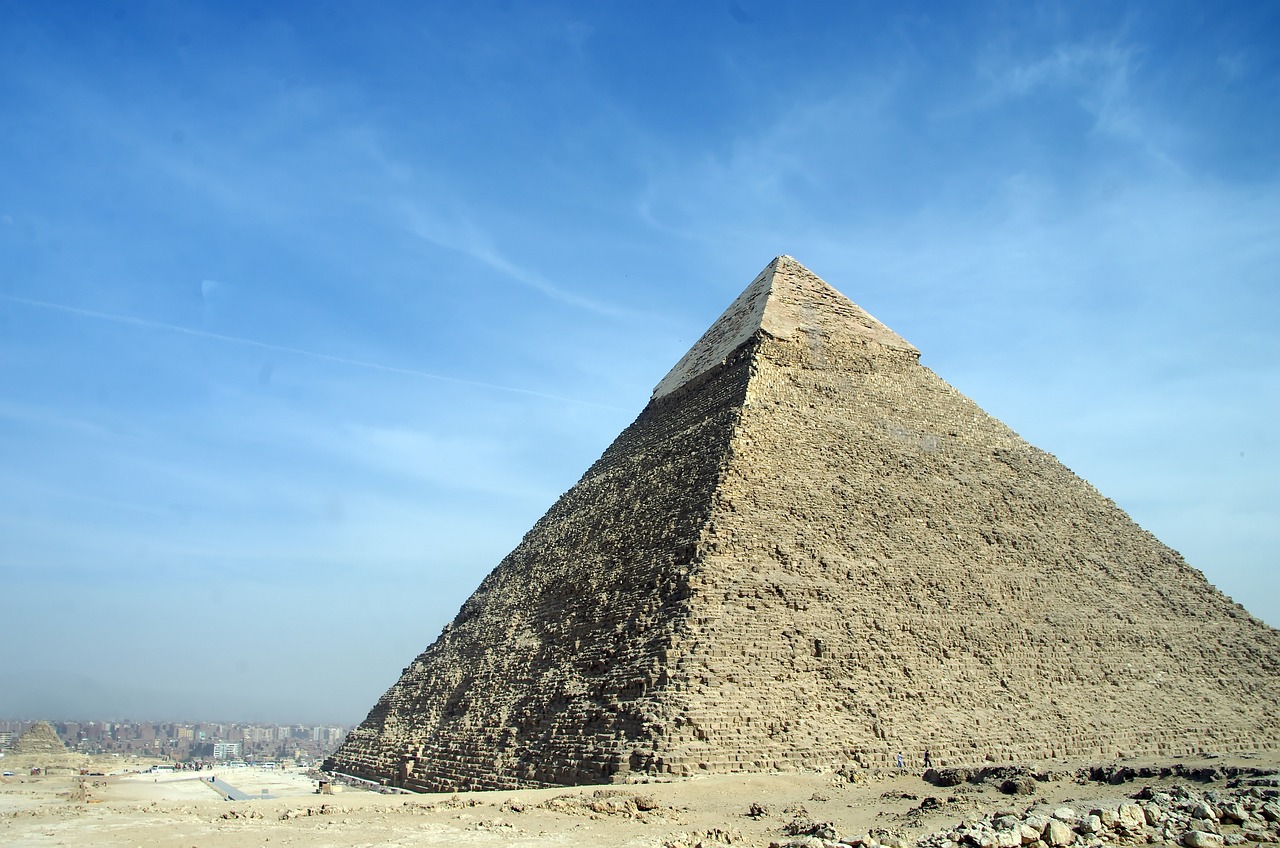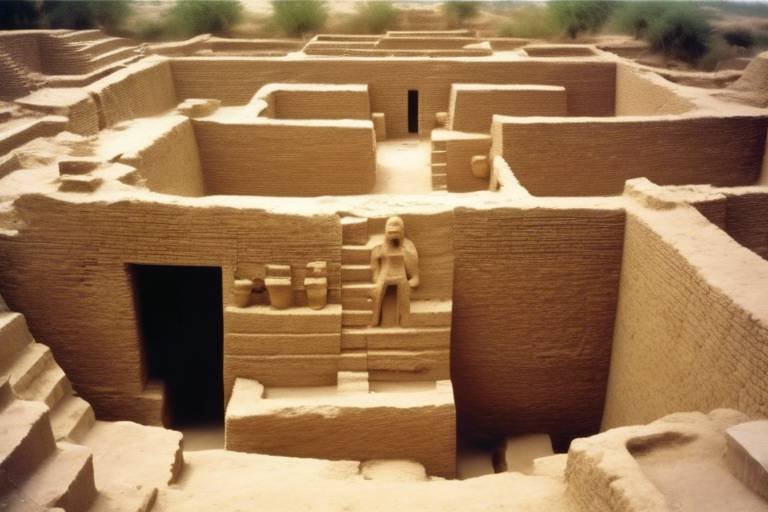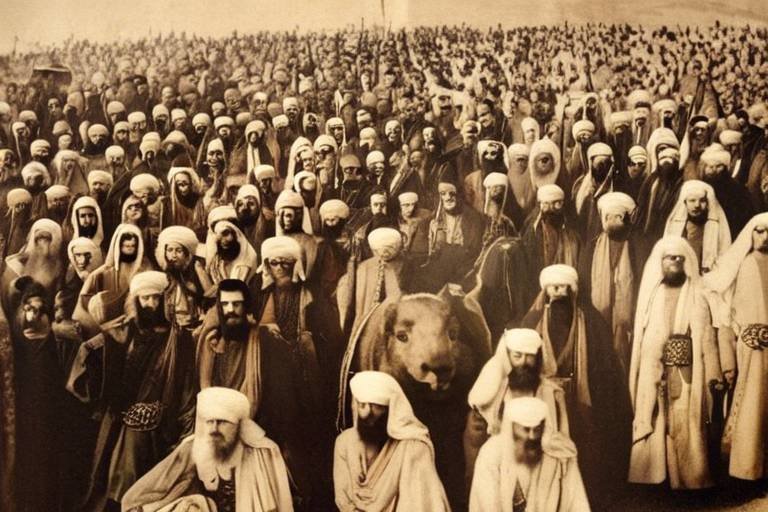The Rise and Fall of the Sumerians - Pioneers of Civilization
The Sumerians, often hailed as the pioneers of civilization, emerged as a remarkable ancient society in Mesopotamia. Their legacy is deeply rooted in groundbreaking innovations that shaped the course of human history. From the invention of writing to advancements in agriculture and urban development, the Sumerians laid the foundation for future civilizations to thrive upon.
At the heart of the Sumerian civilization was a rich tapestry of achievements and contributions that set them apart from their contemporaries. Their mastery in writing, mathematics, architecture, and governance not only showcased their intellectual prowess but also paved the way for the progress of society as a whole. The Sumerians were true trailblazers, setting new standards in various fields that inspired generations to come.
One of the key pillars of Sumerian society was its robust economic structure and flourishing trade networks. Their agricultural practices were revolutionary for their time, enabling surplus food production and fostering trade relationships with neighboring regions. Moreover, the development of cuneiform writing, the world's first known form of writing, revolutionized communication and record-keeping, laying the groundwork for administrative systems that would shape future civilizations.
Delving into the religious beliefs and mythological tales of the Sumerians unveils a complex and vibrant tapestry of spirituality. Their pantheon of gods, creation myths, and rituals provided a lens through which they interpreted the world around them. These beliefs not only shaped their daily lives but also influenced the cultural fabric of their society, leaving an indelible mark on their legacy.
Despite their remarkable achievements, the Sumerian civilization faced a gradual decline marked by invasions, environmental changes, and internal conflicts. These factors, coupled with external pressures, contributed to their eventual downfall, signaling the end of an era that had once thrived in the cradle of civilization.
Nevertheless, the legacy of the Sumerians endures through the annals of time, influencing future civilizations in profound ways. Their contributions to language, law, and cultural practices continue to resonate in modern society, underscoring the enduring impact of a civilization that shaped the course of human history.
Archaeological discoveries have played a crucial role in unraveling the mysteries of the Sumerian civilization. Excavated artifacts, inscriptions, and ancient ruins have provided invaluable insights into their way of life, offering a glimpse into the daily routines and societal structures that defined this ancient culture.
The revival of interest in Sumerian studies among scholars and the general public signifies a renewed fascination with this ancient civilization. As new research and discoveries shed light on previously unknown aspects of Sumerian society, our understanding of their achievements and contributions continues to deepen, ensuring that the legacy of the Sumerians remains an enduring beacon of human ingenuity and innovation.

Origins of the Sumerians
The origins of the Sumerians trace back to ancient Mesopotamia, a region often referred to as the "cradle of civilization." It was here, in the fertile lands between the Tigris and Euphrates rivers, that the Sumerians emerged as one of the earliest urban societies in history. Their civilization flourished around 4000 BC, making them pioneers in various fields that would shape the course of human history.
As the Sumerians settled in the southern part of Mesopotamia, they established city-states such as Uruk, Ur, and Lagash. These city-states became centers of innovation and cultural exchange, where advancements in writing, mathematics, and governance were made. The Sumerians' ability to harness the resources of the land and organize themselves into complex societies set them apart from their contemporaries.
One of the key factors that contributed to the rise of the Sumerians was their mastery of irrigation techniques, allowing them to transform the arid landscape into fertile farmland. This agricultural surplus not only sustained their growing population but also enabled the development of specialized labor and trade networks.
Furthermore, the Sumerians were among the first to develop a system of writing known as cuneiform, which involved using wedge-shaped symbols pressed into clay tablets. This writing system facilitated record-keeping, communication, and the dissemination of knowledge across their expanding civilization.
Over time, the Sumerians built impressive ziggurats, temples, and palaces that showcased their architectural prowess and religious devotion. Their pantheon of gods and goddesses, intricate myths, and elaborate rituals reflected their deep spiritual beliefs and cosmological understanding.
In essence, the origins of the Sumerians can be traced back to a convergence of geographical, technological, and cultural factors that propelled them to the forefront of ancient civilization. Their legacy as innovators and trailblazers continues to inspire fascination and study to this day.

Sumerian Achievements and Contributions
The Sumerians, often regarded as the pioneers of civilization, left an indelible mark on history with their remarkable achievements and contributions. One of their most significant accomplishments was the development of writing, known as cuneiform, which allowed for the recording of information and communication across their society. This innovation laid the foundation for future civilizations to document their history and knowledge.
In the field of mathematics, the Sumerians made groundbreaking advancements, such as the development of a numerical system based on the concept of 60, which is still used today for measuring time and angles. Their architectural prowess is evident in the construction of ziggurats, massive temple complexes that served as religious centers and symbols of their advanced building techniques.
Furthermore, the Sumerians established a sophisticated system of governance, with city-states ruled by kings who oversaw laws, administration, and trade. Their legal code, known as the Code of Ur-Nammu, is one of the earliest known sets of laws, emphasizing justice and social order.
Moreover, the Sumerians were adept at irrigation and agriculture, utilizing the fertile lands of Mesopotamia to cultivate crops such as barley and wheat. Their expertise in farming not only sustained their society but also allowed for surplus production and the development of trade networks with neighboring regions.
Overall, the Sumerian achievements in writing, mathematics, architecture, and governance laid the groundwork for future civilizations to thrive and evolve. Their contributions continue to inspire scholars and researchers to delve deeper into the rich history and legacy of this ancient civilization.

Economic Structure and Trade
The economic structure of the Sumerian society was a complex web of interconnected systems that supported their flourishing civilization. At the heart of their economy was agriculture, with the fertile lands of Mesopotamia providing the foundation for their food production. The Sumerians were adept farmers, utilizing advanced irrigation techniques to cultivate crops such as barley, wheat, and dates. This agricultural surplus not only sustained their population but also enabled trade and specialization in other areas.
Trade played a crucial role in the Sumerian economy, facilitating the exchange of goods both within their society and with neighboring regions. The Sumerians established extensive trade networks that stretched across Mesopotamia and beyond, trading commodities such as textiles, pottery, metals, and precious stones. This trade not only brought valuable resources to the Sumerians but also allowed for cultural exchange and the dissemination of ideas.
One of the most significant contributions of the Sumerians to economic history was the development of the world's first known form of writing, cuneiform. This writing system was initially used for record-keeping related to trade, allowing the Sumerians to track transactions, contracts, and inventories. Cuneiform played a vital role in the administration of their economy, enabling the efficient management of resources and facilitating communication across their vast trading networks.
The Sumerians also engaged in long-distance trade, establishing commercial relationships with distant lands such as the Indus Valley and Anatolia. This trade brought exotic goods to Sumerian markets, enriching their culture and further stimulating economic growth. The city of Ur, one of the most prominent Sumerian urban centers, served as a hub for trade, connecting the Sumerians to the wider world and enhancing their economic prosperity.
Moreover, the Sumerians developed a system of weights and measures to standardize trade transactions, ensuring fairness and accuracy in commercial exchanges. This system, based on units such as the shekel and the mina, provided a common standard for evaluating the value of goods and commodities. The Sumerians' meticulous record-keeping and accounting practices laid the groundwork for future economic systems and contributed to the development of commerce and trade in the ancient world.

Religion and Mythology
When delving into the fascinating realm of Sumerian civilization, one cannot ignore the profound impact of their religious beliefs and captivating mythology. The Sumerians possessed a rich tapestry of deities, myths, and rituals that shaped their worldview and societal practices.
At the heart of Sumerian religion was a pantheon of gods and goddesses, each with their own domains and powers. From the mighty Enlil, the god of wind and storms, to the wise Nisaba, the goddess of writing and knowledge, these divine beings played pivotal roles in the Sumerian cosmology.
The Sumerians' creation myths were equally captivating, depicting the origins of the universe and humanity in vivid detail. One such myth involved the epic tale of Enki, the god of wisdom, creating humans from clay to toil and serve the greater divine pantheon.
Rituals and ceremonies were integral to Sumerian religious practices, with offerings and prayers made to appease the gods and ensure prosperity and protection for the community. The Ziggurat, a towering temple structure, served as a sacred space for these rituals, symbolizing the connection between the earthly realm and the divine.
Moreover, the Sumerians believed in an afterlife, where the souls of the deceased journeyed to the underworld ruled by the goddess Ereshkigal. This intricate belief system provided solace and guidance to the Sumerians in the face of mortality and the unknown.
Overall, the religious and mythological legacy of the Sumerians is a testament to their profound spiritual consciousness and intricate worldview, offering a glimpse into the beliefs and practices of one of the earliest civilizations in human history.

Decline of the Sumerian Civilization
The decline of the Sumerian civilization marked a tumultuous period in their history, leading to the eventual downfall of a once-thriving society. Several interconnected factors contributed to this decline, unraveling the fabric of this ancient civilization that had flourished for centuries. One of the primary reasons for their downfall was the incessant invasions by neighboring tribes and empires, which weakened the Sumerians' military strength and destabilized their territories. The constant threat of external aggression put immense pressure on the Sumerian city-states, leading to widespread unrest and vulnerability.
Moreover, environmental changes played a significant role in the decline of the Sumerian civilization. The region of Mesopotamia, where the Sumerians had established their cities, faced challenges such as droughts, floods, and soil depletion. These environmental factors disrupted agricultural production, which was the backbone of the Sumerian economy, causing food shortages and economic instability. The inability to sustain their agricultural practices further exacerbated the social and political tensions within Sumerian society.
Internal conflicts and power struggles among the city-states also hastened the decline of the Sumerian civilization. Rivalry over resources, trade routes, and political dominance led to frequent conflicts and wars among the Sumerian city-states, weakening their unity and collective strength. The lack of a centralized authority to mediate disputes and maintain stability within the region contributed to the fragmentation and disintegration of the once-unified Sumerian civilization.
Additionally, the gradual erosion of cultural and religious practices that had once bound the Sumerian society together further accelerated their decline. The shift in belief systems, social norms, and governance structures disrupted the traditional fabric of Sumerian life, causing a loss of identity and cohesion among the population. As the core values and institutions of the Sumerian civilization eroded over time, the foundation on which their society was built began to crumble, paving the way for its eventual collapse.

Legacy of the Sumerians
When exploring the legacy of the Sumerians, it becomes evident that their influence on future civilizations was profound and far-reaching. The Sumerians left behind a rich cultural heritage that continues to shape various aspects of modern society. Their contributions in the fields of language, law, and cultural practices have had a lasting impact that transcends time.
One of the most significant legacies of the Sumerians is their pioneering efforts in the development of writing. The invention of cuneiform script by the Sumerians marked a crucial milestone in human history, laying the foundation for written communication and record-keeping. This early form of writing not only facilitated administrative tasks but also enabled the transmission of knowledge and ideas across generations.
Furthermore, the Sumerians made substantial contributions to the establishment of legal systems and governance structures. The concept of codified laws, such as the famous Code of Ur-Nammu and the Code of Hammurabi, can be traced back to Sumerian society. These early legal codes provided a framework for justice and societal order, influencing the development of legal systems in subsequent civilizations.
In addition to their advancements in writing and law, the Sumerians also made significant strides in the realm of mathematics and astronomy. Their numerical system, based on the sexagesimal system, laid the groundwork for mathematical calculations that are still used today. Moreover, Sumerian observations of the stars and celestial bodies contributed to the development of early astronomical knowledge.
Another enduring aspect of Sumerian legacy is their religious beliefs and mythological stories. The Sumerians worshipped a pantheon of gods and goddesses, each with distinct roles and attributes. Their creation myths and epic tales, such as the Epic of Gilgamesh, continue to captivate audiences and offer insights into ancient cosmology and human experiences.
Overall, the legacy of the Sumerians serves as a testament to the enduring impact of ancient civilizations on the course of human history. By examining their achievements and contributions, we gain a deeper appreciation for the innovations and cultural heritage that have shaped our world today.

Archaeological Discoveries
Delving into the realm of archaeological discoveries surrounding the enigmatic Sumerian civilization unveils a treasure trove of insights into their daily lives and cultural practices. Through meticulous excavations and analysis of artifacts, researchers have unearthed a tapestry of evidence that sheds light on the sophisticated society of the Sumerians.
Among the remarkable findings are intricately crafted clay tablets inscribed with cuneiform script, the earliest known form of writing. These tablets serve as windows into the Sumerian world, containing records of transactions, administrative documents, and literary works that offer a glimpse into their governance systems and intellectual pursuits.
Furthermore, the discovery of monumental architecture such as ziggurats, temple complexes, and city walls showcases the advanced engineering skills of the Sumerians. These structures not only reflect their architectural prowess but also provide clues to their religious beliefs and societal organization.
Excavated artifacts like pottery, jewelry, and tools provide tangible links to the daily lives of the Sumerian people, offering valuable insights into their craftsmanship, trade networks, and social hierarchies. Each artifact tells a story, painting a vivid picture of a civilization thriving in the cradle of human civilization.
Moreover, the exploration of ancient ruins such as the city of Ur and the royal cemetery of Ur reveals the grandeur and complexity of Sumerian urban centers. These archaeological sites serve as time capsules, preserving the legacy of a civilization that flourished millennia ago and paved the way for future societies.

Revival of Interest in Sumerian Studies
As we delve into the fascinating world of Sumerian studies, we witness a remarkable resurgence of interest among scholars and the general public alike. The allure of this ancient civilization, with its complex language and intricate societal structures, continues to captivate the minds of researchers and enthusiasts worldwide.
Recent archaeological discoveries have reignited the passion for unraveling the mysteries of Sumerian culture. From newly unearthed artifacts to advanced scientific techniques that shed light on the past, each finding adds a piece to the intricate puzzle of Sumerian history.
Moreover, the digital age has opened up new avenues for exploring and sharing knowledge about the Sumerians. Online databases, virtual reconstructions, and interactive platforms provide unique opportunities for individuals to engage with this ancient civilization in ways previously unimaginable.
Collaborative efforts between experts from various disciplines have also contributed to the revival of interest in Sumerian studies. Cross-disciplinary research projects bring together archaeologists, linguists, historians, and anthropologists to offer fresh perspectives and insights into the rich tapestry of Sumerian society.
Furthermore, educational institutions and cultural organizations are increasingly incorporating Sumerian studies into their programs, fostering a deeper understanding and appreciation for this influential civilization. Workshops, seminars, and exhibitions dedicated to Sumerian culture serve as platforms for sharing knowledge and sparking intellectual discourse.
Frequently Asked Questions
- What were the major achievements of the Sumerians?
The Sumerians made significant contributions to various fields such as writing, mathematics, architecture, and governance. They are credited with inventing the first known form of writing called cuneiform, developing advanced mathematical concepts, constructing impressive ziggurats and city-states, and establishing early forms of government and legal systems.
- Why is the study of Sumerian civilization important?
Studying the Sumerian civilization is crucial as it provides insights into the foundations of modern society. Their innovations in areas like agriculture, trade, and governance laid the groundwork for future civilizations. Additionally, understanding their religious beliefs and cultural practices helps us comprehend the development of early human societies and the evolution of human thought.
- What led to the decline of the Sumerian civilization?
The decline of the Sumerian civilization was influenced by various factors, including invasions by neighboring peoples, environmental changes such as droughts and floods, internal conflicts among city-states, and the weakening of centralized authority. These combined factors eventually led to the downfall of this once-thriving civilization.
- How did the Sumerians influence future civilizations?
The Sumerians left a lasting legacy on future civilizations through their advancements in writing, language, law, and cultural practices. Many aspects of Sumerian culture, including their writing system, religious beliefs, and architectural styles, were adopted and adapted by subsequent societies in the ancient Near East, influencing the development of future civilizations in the region.



















